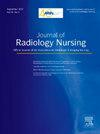临床轮转护生幸福感的影响因素
Q3 Nursing
引用次数: 0
摘要
临床轮转教育对护理专业学生来说是一个挑战。在此期间,他们经常经历压力、焦虑、睡眠障碍和过度疲劳,这些都会破坏他们的健康。这些情况会对学生的学习成绩和学习成绩产生负面影响。本研究旨在分析临床轮转教育中影响护生幸福感的各种因素。方法采用横断面方法对临床轮转教育阶段的护生进行定量研究。使用问卷收集数据,包括性别、态度、自我效能、适应力、应对策略、学业压力和幸福感。采用单因素、双因素和多因素分析来分析数据。结果态度、自我效能感、心理弹性、应对策略和学业压力与幸福感显著相关,其中自我效能感的影响最大。结论自我效能感是预测护生幸福感的主要因素,提高自我效能感是提高护生整体幸福感的关键策略。本文章由计算机程序翻译,如有差异,请以英文原文为准。
Factors Affecting Well-Being Among Nursing Students During Clinical Rotation Education
Background
Clinical rotation education is challenging for nursing students. During this period they often experience stress, anxiety, sleep disturbances, and excessive fatigue which disrupts their well-being. These conditions can negatively affect students' academic performance and learning achievements. This study aimed to analyze various factors that influence nursing students’ well-being during clinical rotation education.
Methods
This was a quantitative study with a cross-sectional approach involving nursing students in the clinical rotation education phase. A questionnaire was used to collect data, including sex, attitudes, self-efficacy, resilience, coping strategies, academic stress, and well-being. Univariate, bivariate, and multivariate analyses were used to analyze data.
Results
Attitudes, self-efficacy, resilience, coping strategies, and academic stress are significantly correlated with well-being, with self-efficacy being the most influential factor among the others.
Conclusion
Self-efficacy is a major factor in predicting nursing students’ well-being, so increasing self-efficacy is a key strategy for improving their overall well-being.
求助全文
通过发布文献求助,成功后即可免费获取论文全文。
去求助
来源期刊

Journal of Radiology Nursing
Nursing-Advanced and Specialized Nursing
CiteScore
0.80
自引率
0.00%
发文量
95
审稿时长
57 days
期刊介绍:
The Journal of Radiology Nursing promotes the highest quality patient care in the diagnostic and therapeutic imaging environments. The content is intended to show radiology nurses how to practice with compassion, competence, and commitment, not only to patients but also to the profession of nursing as a whole. The journal goals mirror those of the Association for Radiologic & Imaging Nursing: to provide, promote, maintain , and continuously improve patient care through education, standards, professional growth, and collaboration with other health care provides.
 求助内容:
求助内容: 应助结果提醒方式:
应助结果提醒方式:


